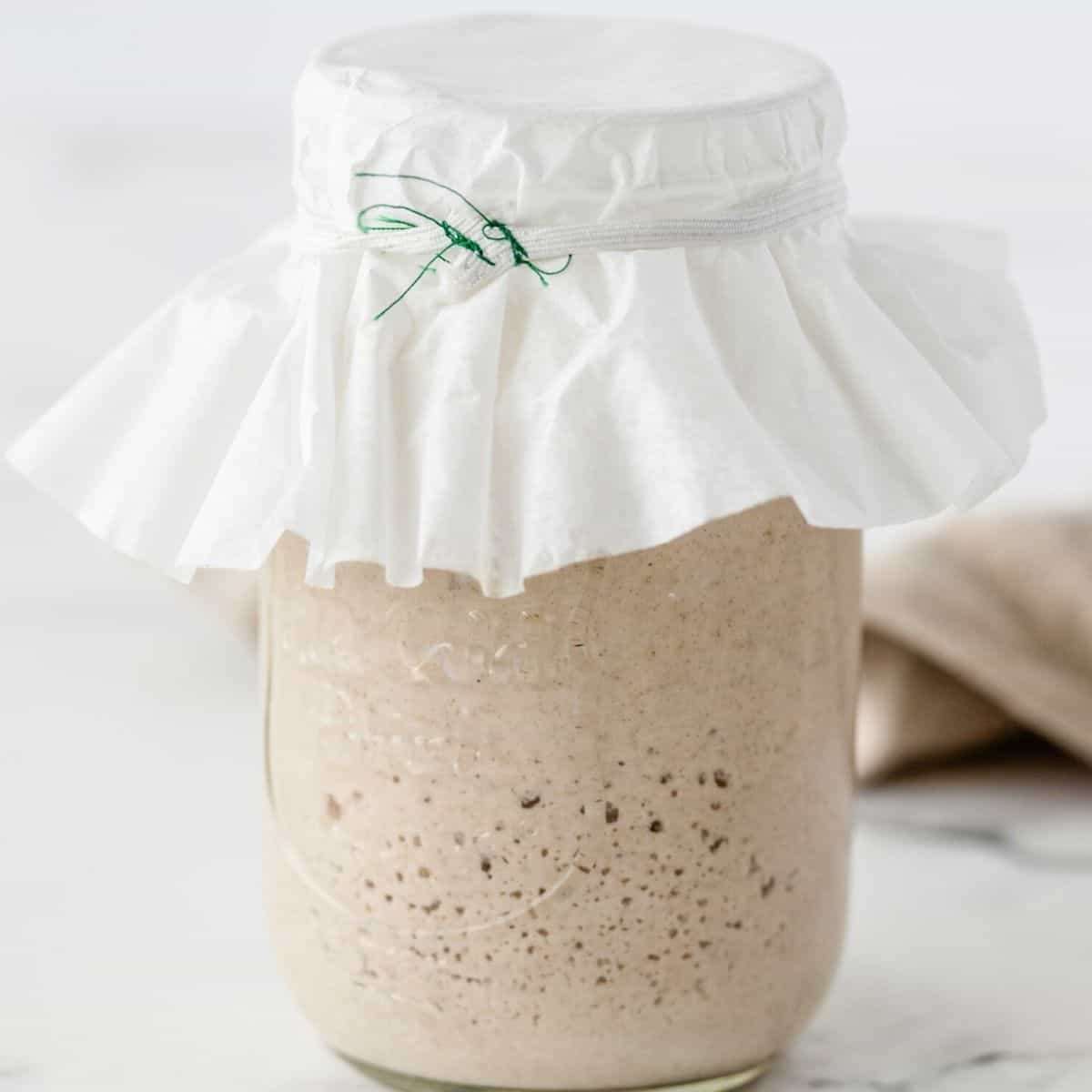
5.0 from 21 votes
Gluten-Free Sourdough Starter
Love sourdough but you're gluten free? This Gluten-Free Sourdough Starter is so easy--you can have tasty sourdough bread ready right away, even if you're avoiding gluten!
Course:
Bread
Cuisine:
Vegan , AIP
Ingredients
Gluten-free Sourdough Starter
- 6 cups gluten-free or grain-free flour
- 5 1/4 cups filtered water
Coconut Flour Sourdough Starter
- 1/2 cup coconut flour
- filtered water
Instructions
Gluten-free Sourdough Starter
- Combine 1/2 cup flour (whatever gluten-free flour or gluten-free flour blend you like) and a scant 1/2 cup filtered water in a medium to large bowl.Whisk until smooth and cover the gluten free sourdough starter with a cheesecloth or clean dishtowel to allow air to circulate but prevent particles from falling in.Set the bowl in a warm area where it will not be disturbed. A kitchen counter, pantry cabinet, or patio can all be good options.
- Wait 12-24 hours.
- At least twice a day for the next six days, at regular intervals, add 1/2 cup of flour and a scant 1/2 cup of filtered water to the existing starter. Mix until smooth, and cover.This is called feeding the starter.Make sure to watch your starter carefully.
- When your gluten-free sourdough starter is very bubbly and creates a dome on top 2-3 hours after each feeding (like the above picture), you are ready to make bread. This is often called the sponge and typically it takes 5-7 days for this to happen.
- Use your starter for making the sourdough bread of choice. See above this recipe card in the post for some great options!
Cup of Yum
For Coconut Flour Starter
- Combine 1/8 cup coconut flour with 1/2 cup filtered water in a large bowl. Whisk until smooth. The mixture should be pourable but not thin.
- Cover the bowl with a plate or other air tight cover, making sure there’s at least a 1/2-inch gap of air at the top.
- Approximately every 12 hours add another 1/8 cup of coconut flour and ½ cup purified water. Stir well and cover.
- In 24–48 hours the mixture should get bubbly and smell fermented. If no bubbles form, try increasing the frequency of feedings to every 8-10 hours.
- If at any time there isn't a 1/2 inch gap at the top of the starter, move it to a larger bowl.
Notes
- Ingredient Amounts: The amounts we give in the ingredient list are the amounts you will need if you only feed the starter twice a day, which is the least number of times you should feed it. So if you feed it more often, you will of course need more flour and water.
- Flour: Gluten-free flour blends (just like with alternative sweeteners like stevia) tend to work best when used in conjunction with others. So it's best not to try to make this sourdough starter or sourdough with only 1 GF flour. Personally, I recommend using a blend of flours. As you can read in this gluten-free baking tips post, using a blend of flours tends to make baked goods turn out better when using alternative flours.
- Grain-Free: For a Paleo Sourdough Starter or AIP Sourdough Starter, just use organic cassava flour or organic tiger nut flour in place of the gluten-free grain flours.